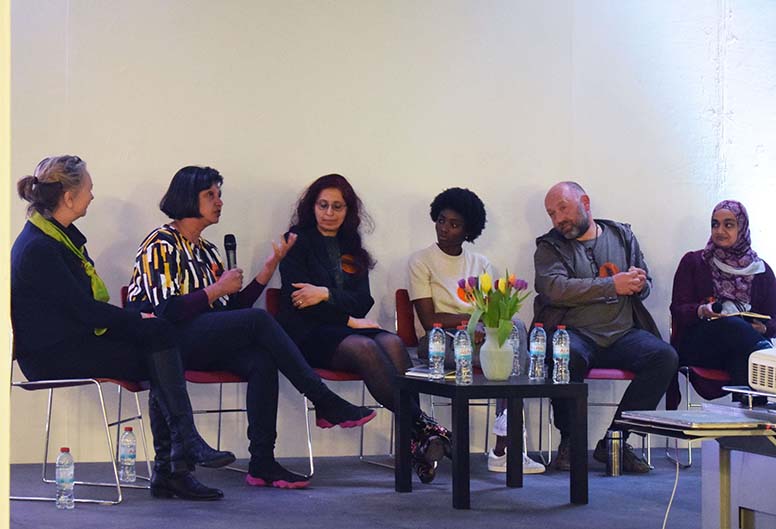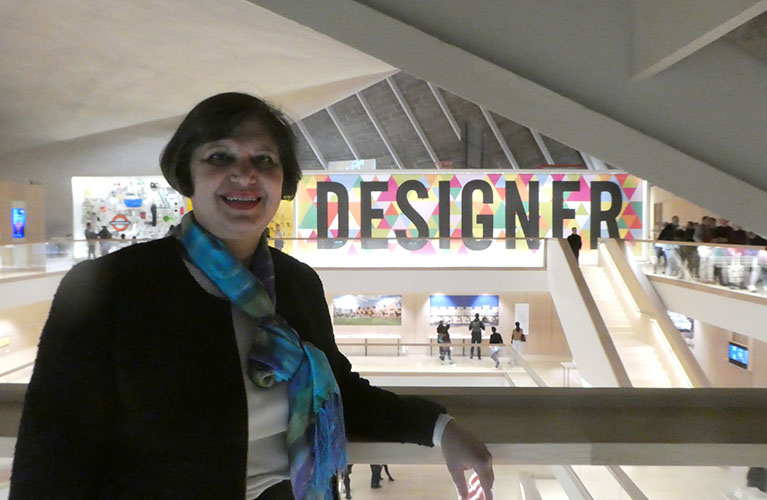Volume Hysteria: House Builders cash in
14 Oct 2004 - Blog
By Yasmin Shariff on October 2004 Planning in London
Volume house-builders are the problem, not the answer, in respect of the shortage of housing in the South-east argues Yasmin Shariff, director of DSA. The demand for more affordable housing in the south east is an opportunity to energise neighbourhoods and villages, not obliterate the greenbelt. Vibrant cities are characterised by diverse and mixed uses. The planning system is designed for a monoculture and it is no surprise that our high streets are dying. The internet and social media has transformed the way we live yet the rules governing our spaces and places are stuck in an antiquated Victorian industrial age when pollution was choking our lungs and we needed homes isolated from the workplace.
Having exploited our towns and cities, volume house builders are now demonstrating their prowess in tarmacking acres of greenfield land and eroding the greenbelt with second rate housing characterised by their brick- banded features and heavy pitched roofs.
Planning departments seem powerless in the face of the financial and political clout welded by these “big boys· (particularly when they join forces with a supermarket chain) to pre vent what amounts to obliteration of our countryside. It could be argued that they actually contribute to the process.
Volume housebuilders have built up an excellent rapport with planning departments. Both parties know that a price has to be paid for permitting development and the focus of the negotiations is on how much local authorities can extract from developers. Poorly conceived uninspired boxes on their pocket handkerchief sites are blessed. courtesy oi the planning departments wielding section 106 agreement, with brick paviour roundabouts and if they are really lucky a playground or community hut adding to the vandalism of the countryside.
The ODPM’s recent announcement for five major growth areas is a major achievement for volume housebuilders. Their lobbying has brainwashed government into thinking that they are the only delivery vehicle to provide the much-needed housing required in the south east. Using volume house builders is like using a hearse. An oversized vehicle for delivering dead lifeless development.
Little thought is given to the social and eco nomic impact of the design of the little brick boxes with their pseudo classical columned porches, designed to maximise profits of volume housebuilders at the expense of local communities Acres of green field land have been released to allow for a recognised housing need for single people and worker housing. Most housing by volume housebuilders costs over 250K for a mere two bedrooms and there is little interest in providing for those with limited means.
Volume housebuilders are geared up to provide mass housing not sustainable communities. Half a dozen house types checkerboarded across a site is a crude and inefficient use of resource.Sensitive and sustainable developments require a different, complex and creative approach. Housing like any other man-made product evolves and changes in response to developing technology. changing values and needs of society. The way we cook, eat and amuse ourselves in the 21st century is radically different to the last decade, yet the planning system is more sympathetic to design which look like they were built in the last century. To design homes that appear to look like designs from another century is a waste of resource. The equivalent would be obliging businesses to install Amstrads rather than Pentium fives.
Housing that maximises energy efficiency and minimises energy use needs to respond the potential of a site in its setting- the views, orientation and exposure will by its very nature look different to the Tudor. Blenheim and Constable models touted by volume house builders and favoured by most planning committees who have had a hand in tinkering with elements of the elevation. Their over consuming obsession with superficial facadism is criminal at a time when 40% oi our elderly population have to choose between heating and eating and it is possible (a, BedZed demonstrates) to building housing that requires no heating.
Building regulations force house builders to improve U values and provide double glazing but there is little evidence that volume house builders are improving the design of their product as a consequence of the planning system. There is no incentive for volume housebuilders to install even simple inexpensive improvements such as wireless technology or delivery facilities for internet shopping. The lack of innovation in house design is not entirely the fault of the volume builder. It is a symptom of the planning process where anything different is treated with great suspicion and usually the subject of an appeal. As a result, there is little innovation and a preference for historic pastiche.
Most manufacturers are forced to improve their product by regulation and market forces. Pick up any modern mass-produced item and the product information gives highly sophisticated technical details. Buy a house, one of the most expensive investments anyone makes, and there is no information provided on its performance. It would be like buying a car (an object a hundredth in value) without knowing its fuel consumption and whether it has central locking or ABS. Lack of information on the performance of a house makes it difficult for any house buyer to purchase one model in preference to another. An acute shortage of new homes also means that the consumer has little choice other than to buy what is available. House builders get away with minimal standards. Design quality is considered a bonus not a fundamental requirement. Houses will sell no matter how poorly they are designed. As a result, little consideration given to the social and economic complexities that can transform a house into a valued home and vibrant place to thrive.
Developments designed for social interaction and economic prosperity are rarely derived from monocultures that fit neatly into planning zones. Richard Florida, the American economist has identified creativity as the most powerful force in the regeneration of cities. The planning system and local authorities could nurture creative approaches, even subsidise them, to encourage high quality assets for the most important investment most individuals make- their home. Investment in better homes will substantially reduce our health bill, unsocial behaviour and the wanton vandalism of the public realm by enhancing our wellbeing, physically, socially and economically.
Vibrant cities are characterised by diverse and mixed-use activities. This complex cocktail of activities is a nightmare for any developer. Their great ally are the antiquated zoning laws which forms the backbone of the planning system. These sterile mono-cultured zones designed to protect people from industrial pollution are ideal for volume housebuilders as they can get away with a simple-minded approach i.e. stuffing bedrooms into pocket handkerchief sites on rolling countryside and not having to consider other uses.
The greatest impediment to the provision of affordable homes is the planning system. The current system forces developers to do what they think the planners want and there is little innovation and a great amount of prejudice. You only have to take a look around at what has been built since 1945 and compare it to what was built before the Town Planning Act came into effect. The reactive process, zoning and obsession with facades has not yielded better design- look around and the evidence of how successfully it has prevented it stares us in the face. If people had more freedom to do what they want in terms of use and the shackles of facadism were removed good design could stand a chance of emerging. Concerns about noise, inappropriate uses, density, height, rights of light can easily be dealt with through a system incorporated in or complimented to Building Control. Planners would then be free to do what they are trained to do – planning, not tinkering with people’s back yard extensions and negotiating large handouts from powerful lobbies of volume housebuilders.
The hysteria over the need for housing is powerful fuel for volume housebuilders. The hysteria is so overpowering that alternatives are not being sought or considered. So long as housebuilders say their developments are sustainable, contribute the agreed Section 106 sum and tick all the right boxes they are given the green light by planning departments. Closer examination of volume-built houses reveal projects like the much acclaimed Abode and Greenwich Village by Countryside Properties have little innovation and poor levels of energy efficiency. Greenwich Village would not meet current Building Control Standards and the lighting and heating installations in the Abode can be compared to installing a dinosaur in a Porsche.
The demand for more affordable housing in the south east is an opportunity to energise villages. Greater numbers of people integrated into villages (not appended at one end in a massive field) will help sustain social and economic activity including the viability of the local pub, shop and the cricket club. These varied uses provide the glue that brings together a community and make them distinct and vibrant. In contrast flooding these villages with volume housing requires high infrastructure costs, attracts hypermarket development and creates social sterility. The exchange of pleasantries at the local shop is a very different experience to shopping at a major supermarket where the sense of space and place are the same alienating experience all over the country.
Giving small-scale developers and individuals an opportunity to develop in their own back yard could easily solve the housing need in the south east. People would only build what they want, where they want but in a manner that enhances their existing property- as it would be in their own interest to do so. New inhabitants to these developments would automatically be plugged into the existing social and physical infrastructure. Not a single blade of grass in our countryside needs to be disturbed. Encouraging the use of skilled professions would further enhance these small-scale developments.
Britain is one of the richest countries in the world with a plethora of highly skilled architects and environmentalists able to deliver high quality affordable homes for people to thrive in. It is about time they were given a chance.





